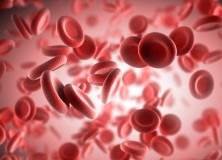Children tend to have a higher risk of iron deficiency (ID) and iron deficiency anemia (IDA) than adults, with some child groups being at greater risk than others. Let’s take a look at these groups and what it is that puts them at a greater risk for this deficiency, which can lead to decreased immunity, impaired cognitive function, and more. Continue reading
Month: September 2014
Are YOU At Risk?
While anyone can experience iron-deficiency, some have a higher risk than others for developing iron deficiency and anemia. Let’s take a look at the adult at-risk groups. Continue reading
10 Things You Didn’t Know About Iron Deficiency
There is so much more to iron deficiency than just not getting enough iron! I’ve rounded up the top 10 things my patients are surprised to learn about iron deficiency. Knowing these things can help you make better choices. Here we go… Continue reading
3 Symptoms that Point to Iron Deficiency
With the hectic lives that many of us lead, it’s not surprising that the signs of iron deficiency often get brushed off or even go entirely unnoticed, often until the iron stores have been depleted to the point of a person becoming anemic. Continue reading
Supplementation Options for Adults
If you have been diagnosed with iron deficiency or iron deficiency anemia, chances are you been advised to use oral iron supplements, along with eating more foods rich in iron. Though there are several available at your pharmacy, resist the urge to just pick up any supplement because iron deficiency is not something you should try to treat on your own. Working with your doctor or pharmacist will allow you to get the right type and dose, and hopefully limit the undesired effects you may experience.
Types of Iron Deficiency
Did you know there are different types of Iron Deficiency? A person can become iron deficient or anemic for different reasons and this isn’t limited to adults, but can actually happen to people of all ages, with some types of anemia being more common than others. Let’s look at some of the types of anemia for a better understanding of who is at risk and why.





